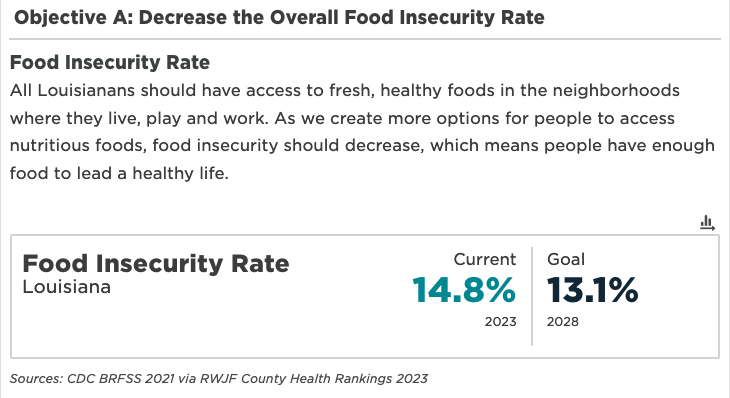Unlocking vibrant health & wellness in Louisiana.
How the Louisiana Department of Health Transformed Community Health Planning with Data-Driven Engagement
Statewide public health
The Louisiana Department of Health and mySidewalk partnered to create the award-winning State Health Assessment (SHA) Dashboard in 2021 and released the State Health Improvement Plan (SHIP) Dashboard in July 2024. Community engagement has been at the heart of the process from the start.
The Challenge
For years, Louisiana’s State Health Assessment (SHA) and State Health Improvement Plan (SHIP) were confined to static PDF reports. While these documents met accreditation requirements, they lacked accessibility and failed to keep up with the evolving health landscape.
Louisiana Department of Health (LDH) needed a dynamic way to:
- Engage communities more deeply in shaping health priorities.
- Ensure real-time access to region-specific health data.
- Create an actionable, transparent improvement plan with community buy-in.
Achieving wellbeing for all is not a one-size-fits-all effort. The team needed a way to capture diverse community voices, highlight urgent health challenges, and drive meaningful policy action.
The Solution
To make health data more accessible and actionable, LDH partnered with mySidewalk to create interactive, user-friendly dashboards that empower community members and policymakers alike.
“I've done this (created a SHA and SHIP) a few times now and this is the best process I think I've been involved in. I feel good about what we're producing.”
Robert Hines
Deputy Director, Planning & Performance
With mySidewalk’s expansive data library, visualization tools, and user-friendly interface, LDH was able to:
✅ Build engaging, interactive dashboards that make health data accessible to all.
✅ Host advisory group meetings that informed real policy decisions.
✅ Enable community members to explore local health data and track progress in real-time.
The State Health Assessment (SHA) Dashboard, launched in 2021, laid the groundwork for a statewide, data-driven conversation about health needs. Building on that momentum, LDH launched the State Health Improvement Plan (SHIP) Dashboard in July 2024—a living tool that will track progress over the next five years.
Watch Corhonda Corley, a Community Advocate in Louisiana, discuss the benefits of individuals’ involvement in the SHIP process to highlight the state's needs and priorities.
Hear Brad Wellons, Regional Manager at the Louisiana Public Health Institute, talk about why his involvement in the SHIP process was rewarding and how the process used a strategic methodology to engage the community of Louisiana.
The Impact
With mySidewalk, LDH dramatically increased community participation and policy impact:
📢 Engaged nearly 6,000 Louisianans through regional meetings, surveys, and interviews.
📊 Mapped key health issues across four priority domains:
These insights didn’t just inform policy—they created real accountability. Advisory groups used mySidewalk’s expansive data library to identify key metrics, ensuring every action was backed by data and focused on measurable outcomes.

About Louisiana Department of Health
Louisiana Department of Health (LDH) services 63 parishes, analogous to counties, across the state.
In efforts to improve health, LDH makes community data transparent, accessible, and easily available on its website. Check out the State Health Assessment now!
A Model for the Future
LDH’s innovative approach didn’t go unnoticed. The SHA Dashboard won a Government Experience Award in 2021 for radically improving how public health data is shared and used.
Today, the SHIP Dashboard continues to track progress, ensuring Louisiana’s health planning process remains transparent, collaborative, and action-oriented.
Aishala Burgess, Assistant District Attorney at East Baton Rouge District Attorney's Office, talks about the legacy of the SHIP process and how rewarding it has been to see progress on goals and objectives.
What's Next?
With an accessible, real-time data tool in place, the Louisiana Department of Health is better equipped than ever to respond to evolving health challenges. The next five years of SHIP tracking will ensure that community-driven priorities translate into real, measurable improvements for Louisianans.
🎯 Want to build a data-driven, community-led approach to public health in your state? See how mySidewalk can help.
Connect with us!
Schedule a demo and unlock the power of interactive dashboards.
